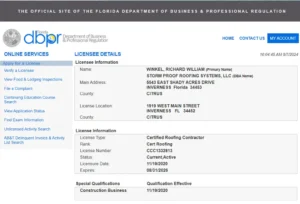When constructing a new home, a strong and durable roof is essential for protecting your investment and ensuring the safety of your family. In this comprehensive guide by Storm Proof Roofing Systems, we will discuss the various aspects of new construction roofing, including different roofing materials, installation processes, and answers to frequently asked questions.
Choosing the Right Roofing Material
When it comes to new construction roofing, there are several options to choose from. Each material has its own benefits and drawbacks, so it’s crucial to consider factors such as cost, durability, aesthetics, and maintenance requirements. Some popular roofing materials include:
- Asphalt shingles: Affordable, easy to install, and available in a variety of colors and styles. However, they have a relatively short lifespan compared to other materials.
- Metal roofs: Durable, energy-efficient, and low maintenance. Metal roofing can be more expensive upfront but can last up to 50 years or more.
- Tile roofs: Aesthetically pleasing and long-lasting, but they can be heavy and require additional structural support. They are also more expensive than other materials.
- Slate roofs: Extremely durable, with a lifespan of up to 100 years, but also very heavy and expensive.
- Flat roofs: Commonly used for commercial buildings, flat roofs require less material and are more accessible. However, they can have drainage issues and may not be suitable for all residential properties.
When considering the cost of these materials, remember to factor in the cost of labor, insulation, and other components required for a complete roofing system.

The Installation Process
- Planning and design: Collaborate with your contractor to determine the best roofing materials and design for your new construction project. This should involve reviewing building codes, considering the local climate, and selecting materials that fit your budget and aesthetic preferences.
- Preparation: Before the installation process begins, your contractor should inspect the site and ensure that all necessary permits and licenses are obtained.
- Roof framing: This stage involves building the roof’s underlying structure, including the rafters, trusses, and decking. Proper framing ensures your roof can support the chosen roofing materials and withstand the weight of snow, ice, and other elements.
- Underlayment installation: A waterproof or water-resistant barrier is installed on top of the roof deck to protect it from moisture and provide a smooth surface for the roofing material.
- Roofing material installation: The chosen roofing material is installed according to the manufacturer’s specifications and local building codes.
- Flashing and sealing: Flashing is installed around roof penetrations, such as vents and chimneys, to prevent water infiltration. Sealing the roof with caulk or other sealants further ensures a watertight seal.
- Gutter installation: Gutters and downspouts are installed to direct water away from the structure, preventing damage to the foundation and landscaping.
- Inspection and cleanup: Once the installation is complete, your contractor should conduct a thorough inspection to ensure the roof is properly installed and meets all applicable codes. They should also clean up any debris and dispose of it appropriately.

Answers to Frequently Asked Questions
By following this guide, you will be well-equipped to make informed decisions about your new construction roofing project. A strong and durable roof not only protects your home and family but also enhances the overall aesthetic appeal and value of your property. Don’t hesitate to consult with an experienced roofing contractor to ensure your new roof is designed, installed, and maintained to the highest standards.
Metal roofing installation involves attaching metal panels or shingles to the roof deck using clips, screws, or nails. Proper underlayment, flashing, and sealing are crucial for a watertight and long-lasting metal roof.
Flat roofs are generally allowed on residential properties in Inverness, FL, but local building codes and homeowners’ association (HOA) regulations may have specific requirements or restrictions. Consult with your contractor and review the applicable codes and regulations before choosing a flat roof for your new residential construction.
The cost of a new construction roof depends on various factors, including the chosen roofing material, labor costs, and additional components like insulation and ventilation. On average, new construction roofing costs can range from $5,000 to $30,000 or more.
Warranties for new construction roofing can vary depending on the manufacturer and the roofing material. Asphalt shingles typically come with a warranty of 20 to 30 years, while metal and tile roofs can have warranties of 50 years or longer. Some manufacturers also offer extended warranties for an additional cost.
When choosing a roofing contractor, consider factors such as their experience, licensing, insurance, and references. Ask for recommendations from friends, family, or neighbors who have recently completed new construction projects, and research online reviews and ratings. Obtain several quotes and ensure the contractor provides a detailed written estimate, including the scope of work, materials, and cost.
Regular maintenance is essential for prolonging the lifespan of your roof and preventing costly repairs. Conduct periodic inspections, especially after storms or extreme weather events, and check for damaged or missing shingles, flashing, and other components. Keep gutters and downspouts clean and free of debris, and trim any overhanging tree branches to prevent damage from falling limbs. Schedule professional inspections and maintenance at least once every two years or as recommended by your contractor.
Energy-efficient roofing options can help reduce energy consumption, lower utility bills, and minimize your home’s environmental impact. Some popular energy-efficient roofing materials include cool roofs, green roofs, and solar roofs. Cool roofs are designed with highly reflective surfaces to reduce heat absorption, while green roofs consist of vegetation and soil layers to provide natural insulation. Solar roofs incorporate solar panels into the roofing system, generating renewable energy for your home.
Building permits are generally required for new construction projects, including roofing. Permit requirements vary by location, so it’s essential to check with your local building department or contractor to determine the specific permitting process for your area. Obtaining the necessary permits ensures that your new roof is built to code and may help avoid potential fines or penalties.
Proper ventilation is crucial for maintaining a healthy and energy-efficient roofing system. Ventilation helps regulate attic temperature, prevent moisture buildup, and reduce the risk of mold and mildew growth. An adequately ventilated roof can also help extend the lifespan of your roofing materials and reduce energy costs by minimizing heat transfer between the attic and living spaces. Discuss the ideal ventilation system for your new roof with your contractor to ensure optimal performance and longevity.
The pitch and slope of a roof refer to its angle or steepness. Pitch is typically expressed as a ratio, such as 4:12, which means that for every 12 horizontal inches, the roof rises 4 vertical inches. Slope, on the other hand, is a measurement of the roof’s angle in degrees. Both pitch and slope can affect the choice of roofing materials, drainage, and overall aesthetic appeal of a home.
Flashing is a critical component of a roofing system, as it helps seal and protect joints and edges from water intrusion. Made from materials such as metal, plastic, or rubber, flashing is installed in areas where the roof meets walls, chimneys, vents, or other penetrations. Properly installed flashing can help prevent water damage, leaks, and costly repairs in the long run.
Underlayment is a crucial element in the roofing system, providing an additional layer of protection between the roofing materials and the roof deck. It helps prevent water infiltration, provides a barrier against wind-driven rain, and helps to reduce the risk of leaks. Underlayment is typically made from materials such as asphalt-saturated felt, synthetic materials, or rubberized asphalt. The choice of underlayment depends on the type of roofing material, local building codes, and climate conditions. Discuss your underlayment options with your contractor to determine the best solution for your new roof.
Gutters and downspouts play a significant role in the performance and longevity of your roofing system. These components are responsible for directing water away from your home’s foundation, preventing damage from water infiltration and erosion. Properly installed and maintained gutters and downspouts can help protect your home from water damage, mold, and mildew growth. When planning your new construction roofing project, consider the design, materials, and placement of gutters and downspouts to ensure optimal drainage and protection for your home.
A drip edge is a metal flashing installed at the edge of the roof to direct water away from the fascia and into the gutters. It helps protect the underlying roof components from water damage and prevents water from seeping underneath the roofing materials. Drip edges are an essential component of a well-functioning roofing system and should be included in your new construction roofing plan.
When choosing roofing materials for your new construction project, several factors should be considered, including the architectural style of your home, your budget, local building codes and climate conditions, and the desired performance and lifespan of the roofing system. Some popular roofing materials include asphalt shingles, metal roofing, clay or concrete tiles, and slate. Each material has its advantages and drawbacks, so it’s essential to discuss your needs and priorities with your roofing contractor to select the best option for your project.
To maximize the durability and longevity of your new roof, work with a reputable, experienced roofing contractor who adheres to industry standards and best practices. Select high-quality roofing materials that are appropriate for your home’s architectural style and local climate. Additionally, invest in proper installation, ventilation, and insulation for your roofing system, and maintain your roof by regularly inspecting for damage, cleaning gutters and downspouts, and addressing any issues promptly.

Understanding the various aspects of new construction roofing can help you make informed decisions throughout the planning, design, and installation process. By working closely with a qualified roofing contractor and staying informed about best practices and innovations in roofing materials and techniques, you can ensure that your new roof is a lasting, durable, and valuable investment in your home.








